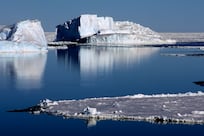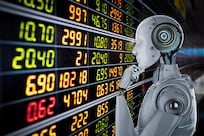The talk in banking circles for the past year has been the future of Barclays Bank and its prospects of survival as an independent institution in an age where a global tide of money is chasing a diminishing supply of assets.
Every big bank in the world has at some stage done an analysis of its asset base and potential break-up value and deal-makers and hedge-funds all over the world have it on their list of potential victims. Of all the big banks, Barclays is probably the most vulnerable: just the right size, with a market value of $50 billion, and still emerging from the series of blows, all self-inflicted, which have dogged it in recent years.
Its shares have been among the worst performers in the banking sector, it has just announced a loss of £2bn for last year and its chief executive, Jes Staley, is currently under investigation for the brusque manner in which he has treated a whistle-blower, which was not a clever thing to do – whistle-blowers are taken very seriously by bank regulators these days.
On top of that, Barclays faces a battery of misconduct and litigation cases, which have probably acted as a poison pill up to this point, but as the bank steadily deals with them, that defence will gradually drop away. Its £7.7bn Qatari fundraising exercise, designed to avoid a British government bail-out in the banking crisis of 2008, is now being investigated by UK and US authorities; several former executives, including the previous CEO John Varley, face criminal charges from the Serious Fraud Office (which they vigorously deny) and the Dubai-based deal-maker Amanda Staveley is suing the bank for up to £1bn. And last but not least, Barclays is also fighting the US Justice Department over mis-selling toxic mortgage-backed securities allegations.
On Monday the veteran activist investor Edward Bramson struck the first blow, announcing that he has taken a 5.2 per cent stake and driving the share price sharply higher. That must have caught the attention of every would-be predator in the world and certainly caused Barclays to circle the wagons. Mr Bramson is not the kind of man who buys stakes in companies and then just waits for things to happen – he makes them happen. “It is very clear that this is not a passive investment,” says the Jefferies banking analyst Joseph Dickerson. “He is not sitting around waiting for a 6.5p dividend next year.”
Barclays is now in play, a tidy morsel which any one of a dozen bigger banks can afford: its market value is now well behind Santander or BNP Paribas (both in the $90bn-plus range, and a third that of HSBC. The big American banks such as JPMorgan and Wells Fargo, which even 25 years ago Barclays dwarfed, command valuations in excess of $300bn. Mr Bramson will be hoping that one or other of them makes the next move.
_______________
Read more:
Barclays delivers on dividend despite 2017 disappointment
UK fraud prosecutor charges Barclays over $3 billion Qatar loan
_______________
The 66-year-old Mr Bramson is British born but has made his fortune and his reputation in the US, where his New York-based Sherborne Investors was instrumental in reviving Ampex, a tech company based in California. In the UK he has successfully shaken up F&C Asset Management, Spirent Communication and Elementis, all returning him healthy returns on his initial investment. He has a bunch of big investors who follow his every move, including Aviva, George Soros’s fund management firm and Fidelity International. The City is watching closely to see if they follow him into Barclays in the coming weeks.
Typically Mr Bramson likes to build up a stake in a potential target, appoint a director to the board, and then produce a list of demands aimed at improving the company’s performance. If he has to, he will force the resignation of the CEO – as he did with F&C and Electra.
Barclays is his biggest fish yet and will not roll over easily. It is one of the UK’s Big Four clearing banks, with an iconic (although rapidly diminishing) presence on most high streets across the country and a serious merchant bank in the City division, which has been its main driver of profits for the past decade. It has over a $1tn of assets on its books and is regarded by the Bank of England as a “systemically important” institution, highly regulated and politically sensitive.
Furthermore, Mr Staley, despite his problems on other fronts, has begun to win the respect of investors by the way he has set about turning around the bank’s fortunes after a disastrous decade since it bought the bulk of the Lehman Brothers out of bankruptcy in September 2008. He has sold the South African business (at a whopping loss), concentrated resources on the merchant banking business and embarked on a major cost-cutting programme. Yet in the past three years Barclays shares have fallen by 11 per cent compared to an 18 per cent increase in the FTSE banks index and 20 per cent for the FTSE all-share.
On Monday the bank issued a statement saying it would “engage” with Mr Bramson and “welcomed” him as a shareholder. There was not much else it could do while it waits to see what he proposes. He can afford to be patient – just by announcing his presence, he has already driven the share price sharply higher and is sitting on a profit of at least £100 million.
That’s not a bad week’s work.





